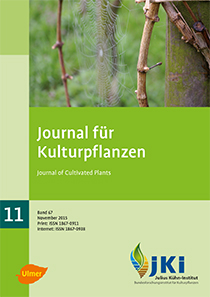Development of a decision support model for the selection of areas for monitoring (Directive 2009/37/EC)
Keywords:
Copper-containing pesticides, national authorization accompanying monitoring, Decision Support Model for Management Authority, selection of areas, Directive 2009/37/EC), sequential extraction, vineyardAbstract
Information about how copper is mobilised in soil can be obtained using sequential extraction method. Four different distribution patterns could be determined analysis soil samples of 78 vine growing areas.
These four patterns are different depending on the fraction of the sequential extraction method in which the highest extractable amount of copper is extracted. However, they have in common, that always less than 10% of the total copper content is easily mobilized.
The most investigated areas show a high amount of aged and mineralized copper content which is higher than the potential mobile copper content. In areas where more than 60% of the total copper is potentially available is a greater risk that the copper can be mobilized than in areas which have a very high proportion of mineralized or aged copper.
The frequency of occurence of the different distribution patterns of the analyzed areas vary depending on the sample area and the pedological parameter.
Significant influencing factors are the copper content, soil texture (sand content) and the pH-value. The potential mobile copper content as well as specific soil conditions, which raise the metal mobility are important to develop criterions for the selection of endangered areas for the implementation of RL 2009/37/EG. These criteria will be proposed to the Management Authority as a decision support for the establishment of programs for “vulnerable zones”, where the contamination of soil with copper causes for concern.
DOI: 10.5073/JfK.2015.11.02, https://doi.org/10.5073/JfK.2015.11.02
Downloads
Published
Issue
Section
License
The content of the journal is licensed under the Creative Commons Attribution 4.0 License. Any user is free to share and adapt (remix, transform, build upon) the content as long as the original publication is attributed (authors, title, year, journal, issue, pages).
The copyright of the published work remains with the authors. The authors grant the Journal of Cultivated Plants, the Julius Kühn-Institut and the OpenAgrar repository the non-exclusive right to distribute and exploit the work.







